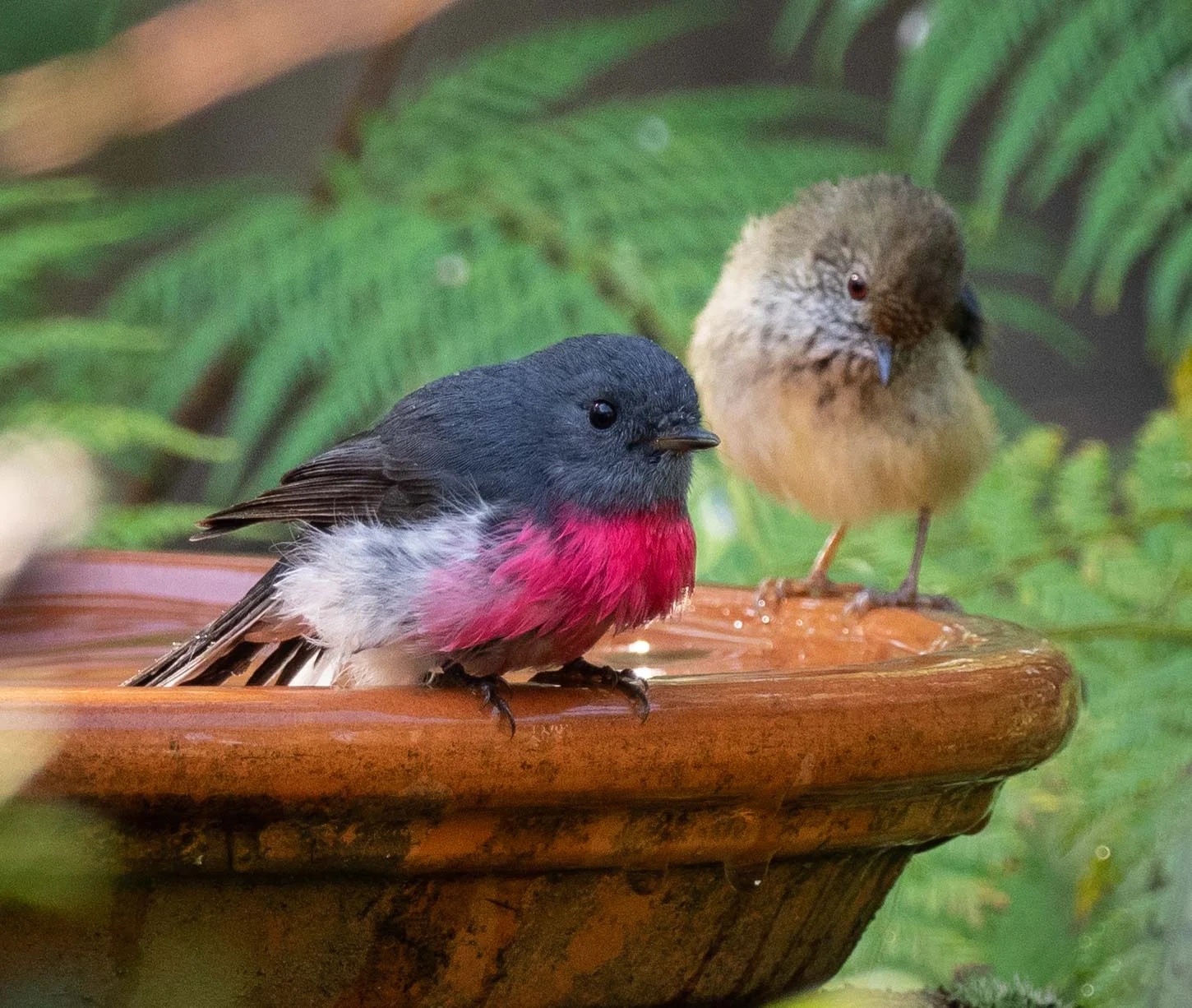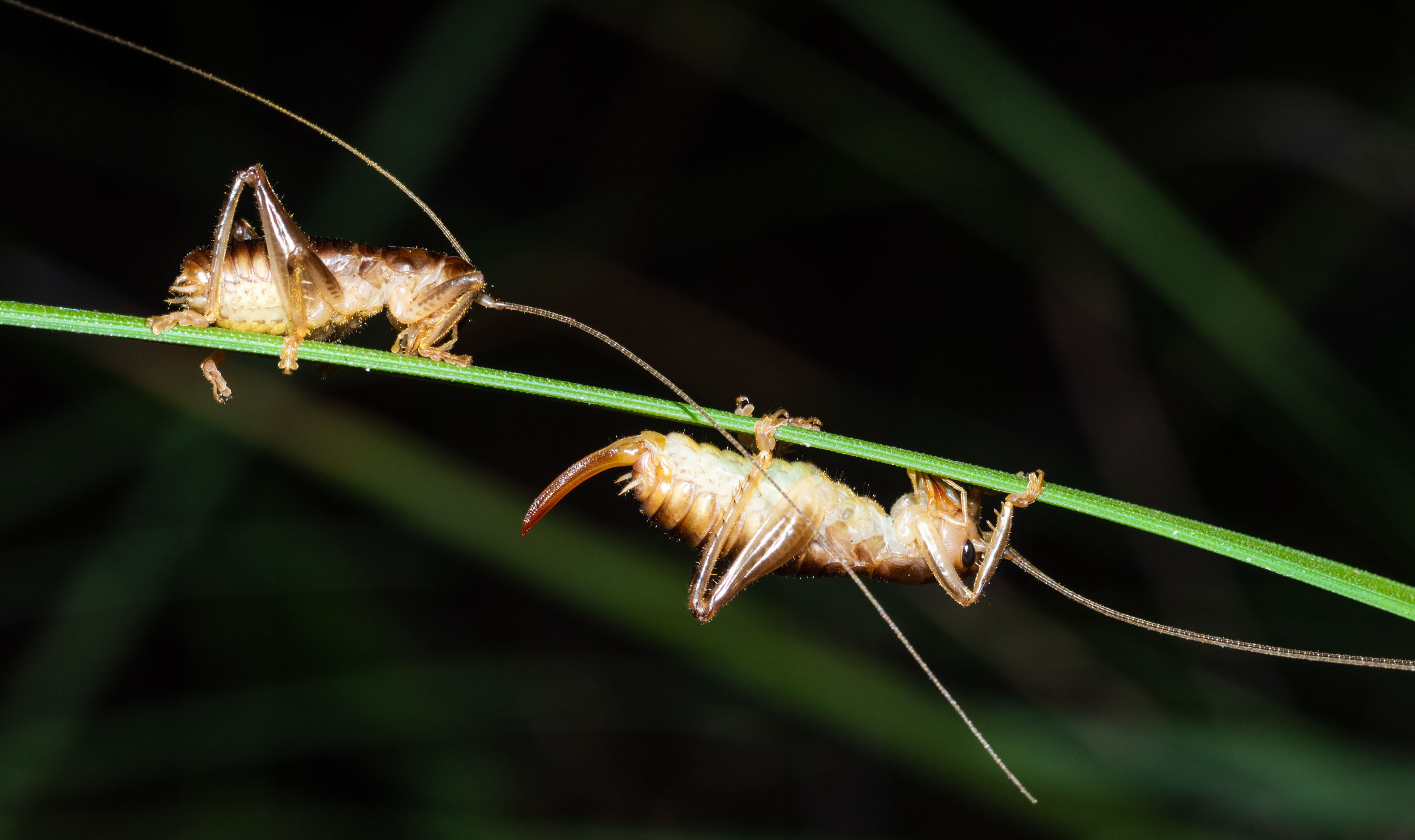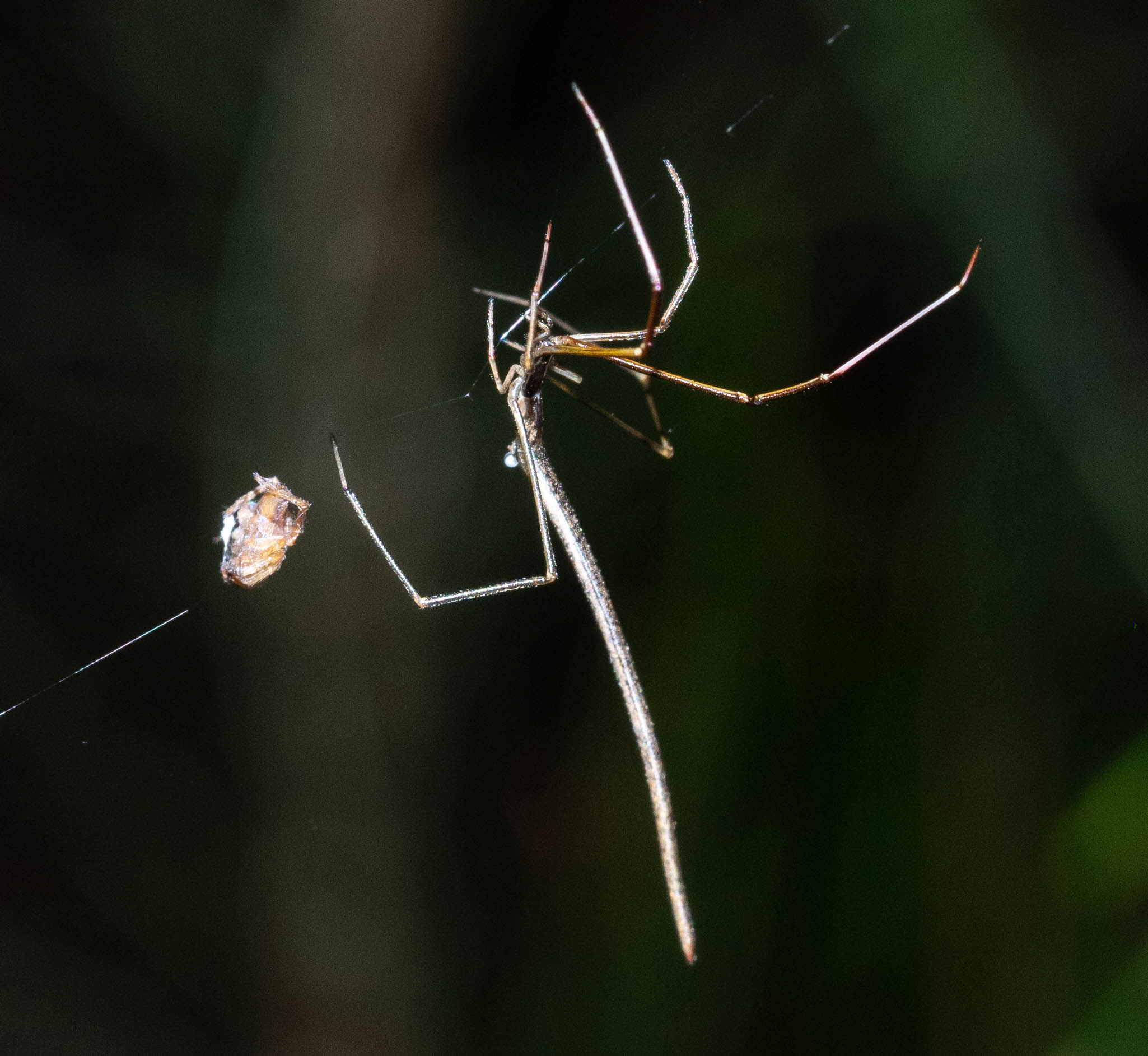
A new robber fly
Yet another new insect for our home list! Not sure what to call it yet. It’s very similar to the so-called ‘wasp-mimicking robber flies’ (Daptolestes spp.), but it may belong to a different group altogether. Does look to be mimicking a wasp though, and it’s definitely a fly …
Order: Diptera; Family: Asilidae

Rose Robin
Such a contrast! Both tiny, but the Rose Robin is so eye-catching while the Brown Thornbill is so … nondescript.

Rose Robin
Male, in fine plumage. Their colours are not always quite so intense (and, no, I didn’t push up the colour saturation). Rose Robins reportedly migrate north in Autumn, yet we see them here year round.

Parasitic wasp
These rather large and beautiful wasps are largely nocturnal, and spend the day hidden away among the foliage. We rarely see them. Their larvae are external parasites of large moth caterpillars.
Enicospilus sp.
Order: Hymenoptera; Family: Ichneumonidae

Psednura
This tiny, cryptic relative of the grasshoppers hides very effectively by aligning itself along grass stems. Lucy, a young friend, spotted it. This one has lost a foot, but that will be restored at the next moult.
Order: Orthoptera; Family: Pyrgomorphidae

Sword-tailed cricket
Not only a new species, but a new family for the home list! A relative of the grasshoppers (Gryllidae) and katydids (Tetagoniidae), this cricket is a ‘trig’ …. family Trigonidiidae.
Trigonidium sp. (most likely)
Order: Orthoptera; Family Trigonidiidae

Sword-tailed cricket
This is a female - note the rather massive ovipositor. Hence the ‘sword-tail’ common name for this family. She is very small – body length about 5mm.
Order: Orthoptera; Family Trigonidiidae

Wood Cricket
We were delighted to find this pair of Wood Crickets on our late night ramble. This group lives in the leaf litter during the day, making a shelter by binding together leaves and twigs. At dark they climb vegetation to feed and mate. The male is on the left, the female, with her long ovipositor on the right. Which species? … a work in progress.
Order: Orthoptera; Family: Gryllacrididae

Wood Cricket
A close up shot of the head of the male - they have impressively long antennae!
Order: Orthoptera; Family: Gryllacrididae

Jumping Spider
With the vegetation motionless on a day of no wind, I watched this small jumping spider moving between bushes on a fine strand of silk.
Order: Aranea; Family: Salticidae

Jumping Spider
It spent some time hunting from the very tip of a Gahnia leaf. With a bundle of silk at the ready, it would suddenly drop off the leaf toward the ground, and then haul itself back up, rebundling its silken bungie rope as it did so.
Order: Aranea; Family: Salticidae

Jumping Spider
Not all silk was immediately recycled. Some threads remained anchored between plants. I can only assume it was using these to hunt … to detect prey, to move along, or perhaps both. All quite a variation on the usual stalk-and-pounce strategy of ground-hunting Salticidae. And fascinating to watch.
Order: Aranea; Family: Salticidae

Whip Spider
Perhaps a better common name would be ‘twig spider’. These small spiders hunt from a web, around a metre above ground, so we weren’t too surprised to discover this one alongside the track during a spotlighting walk last night. Its prey … a smaller spider, probably Plebs sp.
Ariamnes colubrinus
Order: Aranea; Family: Theridiidae

Mating moths
A pair of mating Culladia cuneiferellus moths, caught with a flash during a spotlighting walk last night.
Family: Crambidae

Cockroach
Cockroaches are the archetypal nocturnal insect and sure enough we saw several species on our late night walk around the block last night. They’re surprisingly difficult to identify, but we think this is a nymph of the genus Balta.
Order: Blattodea; Family: Ectobiidae

Cockroach
A different individual, perhaps a different species. This one an adult …. and really quite an attractive specimen!
Order: Blattodea; Family: Ectobiidae

Bull Ant
We often sight this species during the day, so it was somewhat of a surprise to see it hunting at night.
Myrmecia simillima
Order: Hymenoptera; Family: Formicidae

Bull Ant
This one has made a successful hunting trip!
Myrmecia simillima
Order: Hymenoptera; Family: Formicidae

Badge Huntsman
On our late night stroll through the bush last night we sighted numerous spiders. This is a familiar species, which we’ve often seen in the vegetable garden when collecting parsley at night. Here it is in a more natural setting.
Neosparassus diana
Order: Aranea; Family: Sparassidae

Badge Huntsman
Another Badge Huntsman - this one showing the “badge” on the ventral side of its abdomen.
Neosparassus diana
Order: Aranea; Family: Sparassidae

Hunter Spider
This is the most common Wolf Spider seen in the more open area around the house. Dozens can be sighted at night with a head torch, their large, forward-facing eyes reflecting the light beam back to the observer.
Venator spenceri
Order: Aranea; Family: Lycosidae

Wolf Spider
This smaller Wolf Spider is found in the more heavily vegetated areas of the block. It has a distinctive pattern of white and black dots on the abdomen. I haven’t yet been able to find a similar pattern in described species of Lycosidae, so it may be a new species!
Order: Aranea; Family: Lycosidae

Garden Wolf Spider
This particular girl has featured in previous posts but she looked so endearing sitting in the mouth of her burrow that I couldn’t resist taking another photo.
Tasmanicosa godeffroyi
Order: Aranea; Family: Lycosidae























